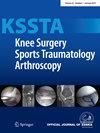External femoral rotation of 2 degrees is associated with the lowest stuffing rates around the femur in functionally aligned TKA
Abstract
Purpose
Modifying femoral morphology after total knee arthroplasty (TKA) poses a potential risk for ligament-imbalances and patella mal-tracking. The purpose of this study was primarily to quantify TKA-induced stuffing around the femur and secondarily assess the effect of femoral rotation (FR) on trochlear and condylar anatomy-changes.
Methods
Knee anatomy-modification was quantified in 69 robotic-assisted TKAs utilising tibia-based functional alignment (FA). Caliper-measurements were performed on the medial (Med), central (Ctr), and lateral (Lat) sides of the following resection planes: anterior trochlea (AT), oblique trochlea (OT), distal condyles (DC), posterior condyles (PC) and tibia (TIB). The same caliper-measurements were performed on the femoral components used to calculate bone-implant differences and analyse possible patterns of postoperative trochlear anatomy-modifications (TAM) and condylar anatomy-modifications (CAM). Over- or understuffing analysis for different FRs and regression analysis were conducted to assess the effect of FR on CAM and TAM.
Results
TAM results were Lat-AT −3.2 mm ([95% confidence interval [CI]: −3.71 to −2.63], p < 0.001), Ctr-AT 0.7 mm ([95%CI: 0.22–1.32], p = 0.02), and Ctr-OT −1.7 mm ([95%CI: −1.85 to −0.93], p < 0.001) with stuffing > 2 mm in 60.9%, 39.1%, and 39.1%, respectively. CAM results were Med-DC −3.6 mm ([95%CI: −4.14 to −3.05], p < 0.001) and Lat-PC 3.0 mm ([95%CI: 2.48–3.38], p > 0.001) with stuffing > 2 mm in 78.3% and 63.8%. FR (3.8 ± 2.6°, range: −1.6° to 8.5°) affected mostly the anterior (r = −0.40, p < 0.001) and posterior (r = 0.71, p < 0.001) aspects of the knee but hardly the OT plane (r = 0.06, p = 0.624) and the trochlear groove to its full range of flexion (r = 0.21, p = 0.17). External FR 2° was associated with the lowest incidence of femoral stuffing > 2 mm and ≥ 4 mm.
Conclusions
FA-typical modification-pattern was a TAM with lateral facet understuffing, and CAM with medial distal understuffing and lateral posterior overstuffing. Trochlear groove height was non-significantly affected by FR. FA with the current off-the-shelf implant induces the lowest stuffing rates when set in 2° external femoral rotation.
Level of Evidence
Level II.





 求助内容:
求助内容: 应助结果提醒方式:
应助结果提醒方式:


